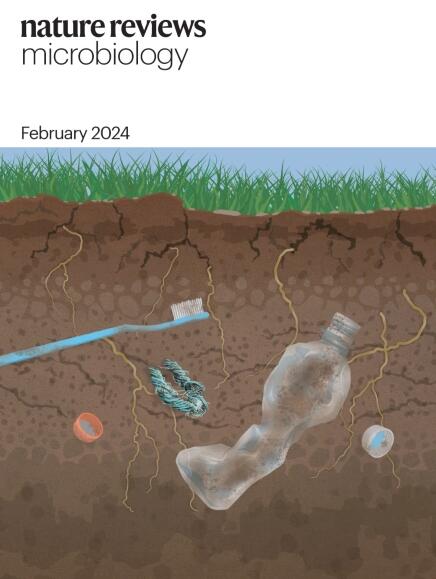尿路感染:发病机制、宿主易感性和新兴疗法
IF 69.2
1区 生物学
Q1 MICROBIOLOGY
引用次数: 0
摘要
尿路感染(UTI)包括尿道、膀胱或肾脏的任何感染,估计每年有 4 亿例感染和数十亿美元的医疗支出。尿道炎最常见的细菌是尿路致病性大肠杆菌,但包括克雷伯氏菌、肠球菌、假单胞菌、葡萄球菌甚至念珠菌等酵母菌在内的多种病原体也可导致尿道炎。女性和男性、健康和免疫力低下的患者都会发生尿毒症。然而,某些患者因素会导致疾病的发生:例如,女性性别、既往 UTI 病史或存在导尿管或其他泌尿道异常。目前治疗尿道炎的临床模式包括使用抗生素。遗憾的是,随着 UTI 分离物中抗菌素耐药性的增加,这种方法的疗效正在下降,而且每年用于治疗这些感染的抗生素处方量巨大,导致了耐药病原体的出现。因此,迫切需要新的抗生素和非抗生素治疗与预防策略。在本综述中,我们将讨论近期对细菌致病机理、复发、持续存在、宿主与病原体相互作用以及宿主易感性因素的研究如何为治疗和预防UTIs阐明了新的、有前景的靶点。本文章由计算机程序翻译,如有差异,请以英文原文为准。


Urinary tract infections: pathogenesis, host susceptibility and emerging therapeutics
Urinary tract infections (UTIs), which include any infection of the urethra, bladder or kidneys, account for an estimated 400 million infections and billions of dollars in health-care spending per year. The most common bacterium implicated in UTI is uropathogenic Escherichia coli, but diverse pathogens including Klebsiella, Enterococcus, Pseudomonas, Staphylococcus and even yeast such as Candida species can also cause UTIs. UTIs occur in both women and men and in both healthy and immunocompromised patients. However, certain patient factors predispose to disease: for example, female sex, history of prior UTI, or the presence of a urinary catheter or other urinary tract abnormality. The current clinical paradigm for the treatment of UTIs involves the use of antibiotics. Unfortunately, the efficacy of this approach is dwindling as the prevalence of antimicrobial resistance rises among UTI isolates, and the immense quantity of antibiotics prescribed annually for these infections contributes to the emergence of resistant pathogens. Therefore, there is an urgent need for new antibiotics and non-antibiotic treatment and prevention strategies. In this Review, we discuss how recent studies of bacterial pathogenesis, recurrence, persistence, host–pathogen interactions and host susceptibility factors have elucidated new and promising targets for the treatment and prevention of UTIs. In this Review, Timm, Russell and Hultgren provide an overview of the bacterial and host factors contributing to the development of urinary tract infections, and they highlight new treatment strategies currently under development.
求助全文
通过发布文献求助,成功后即可免费获取论文全文。
去求助
来源期刊

Nature Reviews Microbiology
生物-微生物学
CiteScore
74.00
自引率
0.50%
发文量
149
审稿时长
6-12 weeks
期刊介绍:
At Nature Reviews Microbiology, our goal is to become the leading source of reviews and commentaries for the scientific community we cater to. We are dedicated to publishing articles that are not only authoritative but also easily accessible, supplementing them with clear and concise figures, tables, and other visual aids. Our objective is to offer an unparalleled service to authors, referees, and readers, and we continuously strive to maximize the usefulness and impact of each article we publish. With a focus on Reviews, Perspectives, and Comments spanning the entire field of microbiology, our wide scope ensures that the work we feature reaches the widest possible audience.
 求助内容:
求助内容: 应助结果提醒方式:
应助结果提醒方式:


